The country’s 594 JNVs are arguably the most valuable legacy of the late prime minister Rajiv Gandhi. These free-of-charge CBSE-affiliated boarding schools are shining beacons of hope offering a small minority of rural students a lifeline to escape the grinding poverty and backwardness of village India – Summiya Yasmeen
The 11th Annual Status of Education Report (ASER) 2016, painstakingly researched and compiled by the globally respected Mumbai-based Pratham Education Foundation (estb.1994) whose 25,000 volunteers tested the learning outcomes of 562,305 primary school children in 589 districts of rural India, yet again presents a bleak picture of primary education in the forgotten rural hinterland, where 69 percent of the nation’s citizenry struggles to make ends meet.
According to ASER 2016, less than 50 percent of class V children in rural schools can read class II texts — a situation which has remained unchanged for the past five years. Moreover, the percentage of class V children who can do subtraction sums has declined from 48.5 percent in 2012 to 44.3 percent in 2016, with only 21.1 percent of children able to do simple division sums.
Against this bleak scenario of gross neglect of primary schooling in rural India, the country’s 594 Jawahar Navodaya Vidyalayas (JNVs) — free-of-charge class VI-XII co-ed CBSE-affiliated boarding schools established by the Central government — are shining beacons of hope offering a tiny minority of brightest and best rural students a lifeline to escape the grinding poverty and backwardness of village India which seven decades after the nation attained freedom remains “a sink of localism, a den of ignorance, narrow-mindedness and communalism,” as described by Dr. B.R. Ambedkar (1891-1956), prime author of the Constitution of India.
JNVs are arguably the most valuable legacy endowed by the late prime minister Rajiv Gandhi upon the neglected rural majority of post-independence India. Although an urban-oriented epicure, in a lucid moment — probably at the behest of then Union human resource development minister P.V. Narasimha Rao — Rajiv enacted legislation to construct at least one JNV in each administrative district of the country to provide free, urban equivalent upper primary to higher secondary boarding school education to children of the rural poor. At that point of time, only 43.57 percent of the population was literate and 56 percent — more than 100 million — children in the age group 5-14 were out of school with 85 million children eking out miserable lives in rural India.
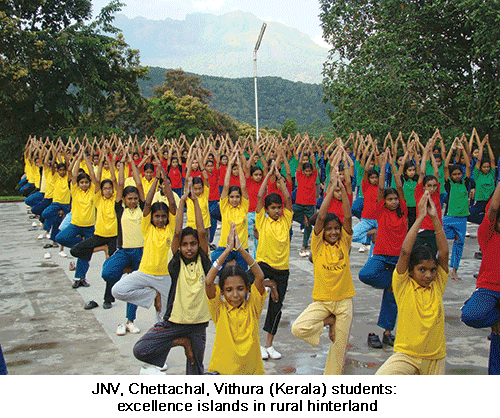 The first two experimental JNV schools were constructed in 1985 in Amravati (Maharashtra) and Jhajjar (Haryana) districts by the Navodaya Vidyalaya Samiti, an autonomous body registered by the Central government under the Societies Registration Act, 1860. Encouraged by the enthusiastic response to this rural schooling initiative, the National Policy on Education 1986 proposed and the Seventh Plan (1987-1992) formalised the construction of at least one JNV in all of the country’s rural districts, subject to state governments providing 30 acres of land free of charge for hosting the Centrally-funded class VI-XII JNVs.
The first two experimental JNV schools were constructed in 1985 in Amravati (Maharashtra) and Jhajjar (Haryana) districts by the Navodaya Vidyalaya Samiti, an autonomous body registered by the Central government under the Societies Registration Act, 1860. Encouraged by the enthusiastic response to this rural schooling initiative, the National Policy on Education 1986 proposed and the Seventh Plan (1987-1992) formalised the construction of at least one JNV in all of the country’s rural districts, subject to state governments providing 30 acres of land free of charge for hosting the Centrally-funded class VI-XII JNVs.
“The mandate of JNVs is to provide high quality modern education to talented children from rural areas regardless of their families’ socio-economic condition. Over the years, the JNVs have been able to enhance educational standards in rural areas by sharing expertise, experience and facilities, and have emerged as providers of high quality education to economically and socially underprivileged children in village India. The seats to applicants ratio — 1:50 — speaks volumes of JNVs which have been enthusiastically welcomed by the public,” says Biswajit Kumar Singh, commissioner of the Navodaya Vidyalaya Samiti (see interview p.72).
Three decades after the first JNV was promoted, the academic community is unanimous that JNVs have emerged as islands of education excellence and model public schools in the arid landscape of rural India.
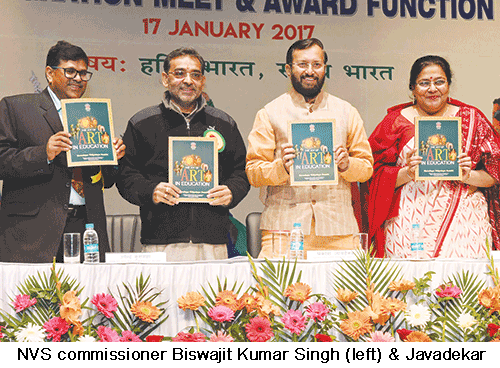 “There’s no doubt India’s too-few JNVs are a God-send. They offer good quality teachers, CBSE affiliation and fully-supportive infrastructure, in sharp contrast to state government schools. Another major advantage of JNVs is that they are wholly residential. This has had a very significant and positive impact on their teaching-learning environments. Moreover, admission into JNVs is through a rigorous entrance test, so only the brightest children are admitted. Though the quality of education imparted is undoubtedly very good, they have not had much success in raising teaching-learning standards in rural India. A mere 600 JNVs are neither in a position, nor can be expected to influence the quality of 250,000 secondary schools in the country,” says Prof. Jandhyala B.G. Tilak, vice chancellor of the National University of Educational Planning and Administration (NUEPA), Delhi.
“There’s no doubt India’s too-few JNVs are a God-send. They offer good quality teachers, CBSE affiliation and fully-supportive infrastructure, in sharp contrast to state government schools. Another major advantage of JNVs is that they are wholly residential. This has had a very significant and positive impact on their teaching-learning environments. Moreover, admission into JNVs is through a rigorous entrance test, so only the brightest children are admitted. Though the quality of education imparted is undoubtedly very good, they have not had much success in raising teaching-learning standards in rural India. A mere 600 JNVs are neither in a position, nor can be expected to influence the quality of 250,000 secondary schools in the country,” says Prof. Jandhyala B.G. Tilak, vice chancellor of the National University of Educational Planning and Administration (NUEPA), Delhi.
Nevertheless, there’s no denying that in terms of academic achievement, JNVs have justified the investment made in them with their students proving themselves to be on a par — if not better — with counterparts in best CBSE schools. According to an Evaluation Study on the Navodaya Vidyalaya Samiti (March 2015) published by the Delhi-based NITI Aayog (a Central government-sponsored think tank and advisory council which has replaced the Soviet-style Planning Commission wound up by the newly-elected BJP-led NDA government in 2014), “Navodaya’s average pass percentage is higher than the national average of other schools affiliated to CBSE” and equivalent to the Central government-run 926 Kendriya Vidyalayas (promoted to provide K-12 education to children of Central government employees in transferable jobs) across the country.
| JNVs snapshot
India’s 594 CBSE-affiliated Jawahar Navodaya Vidyalayas (JNVs) — class VI-XII co-educational rural residential schools — are administered by the Noida-based Navodaya Vidyalaya Samiti (NVS), an autonomous society under the Union ministry of human resource development’s department of secondary and higher secondary education. The chairman of the samiti is the Union HRD minister ex-officio. The society functions through an executive committee responsible for the administration and disbursal of funds to JNVs countrywide through its eight regional offices in Bhopal, Chandigarh, Hyderabad, Jaipur, Lucknow, Patna, Pune and Shillong. Admission process. Admission into 594 JNVs established in 576 districts countrywide is on the basis of performance in the JNV Selection Test (JNVST), conducted by the Central Board of Secondary Education — India’s largest national school-leaving examinations board. The written test is held in the month of January/February in selected blocks and districts. JNVST is an objective, written, class-neutral exam designed to ensure that rural children are not at a disadvantage. The test can be written in any one of 20 Indian languages. All children between five-13 years of age who have passed the class V exam of any recognised school are eligible to write JNVST. The country’s 594 JNVs have an aggregate enrolment of 240,000 students mentored by 12,000 teachers. Fees. The fully residential JNVs provide free-of-charge tuition, board and lodging, uniforms, textbooks, stationery and home to school and back rail and bus fares during vacations. |
In 2013, 99.73 percent of JNV students cleared the class X CBSE exam — bettering the 99.46 pass percentage of KVs and 99.46 percent of private independent CBSE schools. Likewise, 96.14 percent of JNV students cleared CBSE’s class XII school-leaving exam cf. 94.81 percent in KVs and 82.31 percent in independent CBSE-affiliated schools.
Admittedly, the superior academic performance of JNVs is attributable to the Samiti’s (society’s) rigorous IIT/IIM-style admission test which ensures that only the brightest and best rural and small-town students enter these elite schools offering the secondary education syllabus of the Delhi-based CBSE — India’s largest (18,705 affiliated schools) national school examinations board — which is far superior to the ill-researched and haphazard syllabuses formulated by the country’s 31 state examination boards. According to Union HRD minister Prakash Javadekar, speaking at the Navodaya National Integration Meet in Delhi on January 17, an estimated 2.2 million children wrote the Jawahar Navodaya Vidyalaya Selection Test (JNVST) in 2016, of whom only 40,000 were admitted. On average, 4,000 children compete for the 80 available seats in each JNV, i.e, only the top 2 percent of JNVST applicants are admitted — placing JNVs on a par with IITs and IIMs.
Unsurprisingly, intense competition for admission into the much-too-few JNVs has prompted the promotion of private tutoring institutes and coaching classes which tilt the scales in favour of children from relatively rich rural households. Comments NITI Aayog’s NVS evaluation study: “There is a general feeling among parents and children, especially those who have not been selected for admission, that to know the techniques of solving questions in the admission tests, one needs orientation/training (which is mainly affordable to urban children, service class and rich parents)”. According to the authors of the study, “there is substance in the claim that the parents of the children who are studying in JNVs represent the middle income service class”. Moreover, 50 percent of students who write JNVST believe half the students admitted annually are selected on considerations other than merit, and that the “creamy layer” of rural India dominates the 594 JNVs.
Most academics believe that the major contributing factor to the success of JNVs is that expenditure per student is the highest in the public school education system. For instance in the Kendriya Vidyalayas, the Central government’s annual expenditure was Rs.27,150 per student in 2015-16 against Rs.85,000 per student in JNVs. In state government schools, annual per student expenditure ranges from Rs.12,000 in primary school to Rs.16,000 at the secondary/higher secondary level. The Central government also generously invests in infrastructure and facilities of JNVs. In 2014-15, NVS spent Rs.268.43 crore on the construction of new buildings and Rs.8.33 crore on repairs and maintenance.
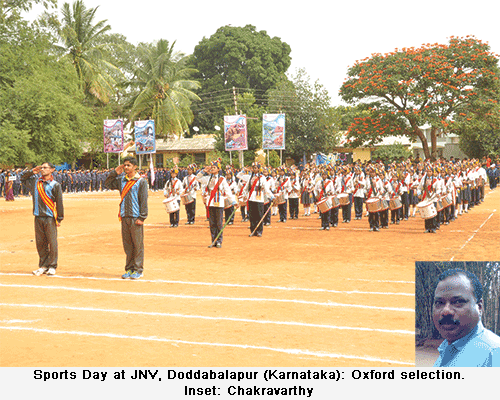 Therefore, given that per student expenditure in JNVs is the highest of the government school system, it’s unsurprising that the country’s 594 JNVs offer excellent infrastructure including well-equipped libraries, science and computer labs, dormitories, dining halls and sports facilities. For instance JNV, Doddaballapur (JNV-D, estb.1986), spread over a sprawling green 22-acre campus in Bangalore rural district, offers 14 spacious classrooms, science labs, a library with 10,000 volumes and 50 magazine/journal subscriptions, a computer lab with 32 terminals, and a Samsung Smart Class centre with 41 laptops. Moreover, in 2013 it was one of five schools worldwide selected by Global Jet Watch, an initiative of Oxford University (UK), to house its global observatory to investigate and understand ‘black holes’ in space. The Ritchey-Chretien Optical System (RCOS) telescope is housed in the school’s aerodrome, built in collaboration with the Raman Research Institute, Bangalore.
Therefore, given that per student expenditure in JNVs is the highest of the government school system, it’s unsurprising that the country’s 594 JNVs offer excellent infrastructure including well-equipped libraries, science and computer labs, dormitories, dining halls and sports facilities. For instance JNV, Doddaballapur (JNV-D, estb.1986), spread over a sprawling green 22-acre campus in Bangalore rural district, offers 14 spacious classrooms, science labs, a library with 10,000 volumes and 50 magazine/journal subscriptions, a computer lab with 32 terminals, and a Samsung Smart Class centre with 41 laptops. Moreover, in 2013 it was one of five schools worldwide selected by Global Jet Watch, an initiative of Oxford University (UK), to house its global observatory to investigate and understand ‘black holes’ in space. The Ritchey-Chretien Optical System (RCOS) telescope is housed in the school’s aerodrome, built in collaboration with the Raman Research Institute, Bangalore.
“JNV, Doddaballapur has carved a niche for itself in Karnataka as a model primary-secondary school. Our students excel in academics, sports and extra-curricular activities, and our alumni are doing well in all professions. Global Jet Watch, Samsung and several other corporates have chosen our school for their corporate social responsibility (CSR) initiatives, with the knowledge that JNV students and teachers will make full use of and benefit from these projects,” says R. Chakravarthy, a graduate of S.V. University, Tirupathi who acquired valuable teaching and admin experience in West Godavari, Kurnool, Chitradurga and Sikkim JNVs before he was appointed principal of JNV, Doddaballapur in 2015. Currently, this class VI-XII JNV has 507 students instructed by 35 teachers on its muster rolls.
According to Chakravarthy, the annual government grant of Rs.4.5 crore is “just about sufficient to cover the education, board and lodging expenses of students and teachers’ salaries”. “This leaves no surplus for maintenance and new initiatives. That’s why CSR partnerships with corporates are important. Moreover, we have begun to solicit alumni donations for special projects. Every year one batch of alumni celebrates its silver jubilee and collects funds for the school,” he adds.
The excellent learning outcomes of relatively neglected and underprivileged JNV students has enthused India Inc, making these high-performance schools a natural choice for their CSR initiatives. For instance in 2013, Samsung India Pvt. Ltd, the India subsidiary of the South Korean transnational electronics conglomerate, voluntarily undertook to equip all JNVs across the country with a package comprising interactive Samsung Smartboards, computer tablets, printer, wi-fi connectivity, power backup and digital education content. Since then, the company has installed its Smart Class package in over 400 Jawahar Navodaya Vidyalayas countrywide, and has trained 7,400 JNV teachers in digital technology usage.
“Samsung is inspired by the deep commitment of JNV teachers, administrators and the excellent academic performance of JNV students. Feedback from JNV teachers and principals indicates that the Samsung Smart Class package has improved student involvement and comfort with technology. With the success of this programme, our next step is to award 150 Samsung Star Scholar merit scholarships to JNV students admitted into the IITs and NITs. Each scholarship is of Rs.2 lakh per year and covers the entire four-year undergraduate programme,” says Deepak Bhardwaj, the Delhi-based vice president of Samsung India.
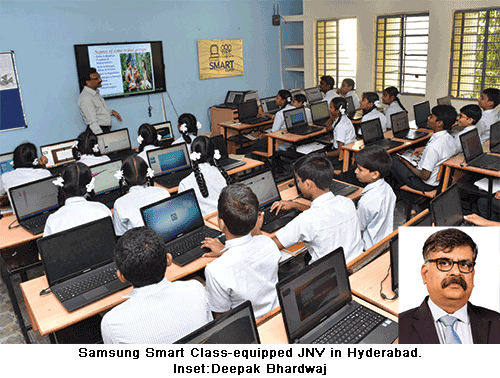 Similarly, the Pune-based Dakshana Foundation, an NGO promoted in 2007 by US-based hedge-fund manager and philanthropist Mohnish Pabrai and his wife Harina Kapoor, has made a commitment to the Navodaya Vidyalaya Samiti to fund the IIT-JEE (joint entrance exam) coaching of selected JNV class XI and XII students to ease their admission into the country’s top-ranked engineering colleges. Under the programme, Dakshana scholars are selected through an open entrance test held for class X JNV students countrywide. Every year, an estimated 45,000 JNV students write Dakshana’s entrance test, of whom 400 are admitted into the foundation’s two-year JEE/NEET scholarship/coaching programme offered in seven selected JNVs across the country. This programme has recorded phenomenal success with 1,100 of the 2,044 JNV-Dakshana scholars being admitted into IITs — an acceptance rate of 53.8 percent cf. the national average of 2 percent — with the remainder admitted into NITs and other top-rung engineering colleges countrywide.
Similarly, the Pune-based Dakshana Foundation, an NGO promoted in 2007 by US-based hedge-fund manager and philanthropist Mohnish Pabrai and his wife Harina Kapoor, has made a commitment to the Navodaya Vidyalaya Samiti to fund the IIT-JEE (joint entrance exam) coaching of selected JNV class XI and XII students to ease their admission into the country’s top-ranked engineering colleges. Under the programme, Dakshana scholars are selected through an open entrance test held for class X JNV students countrywide. Every year, an estimated 45,000 JNV students write Dakshana’s entrance test, of whom 400 are admitted into the foundation’s two-year JEE/NEET scholarship/coaching programme offered in seven selected JNVs across the country. This programme has recorded phenomenal success with 1,100 of the 2,044 JNV-Dakshana scholars being admitted into IITs — an acceptance rate of 53.8 percent cf. the national average of 2 percent — with the remainder admitted into NITs and other top-rung engineering colleges countrywide.
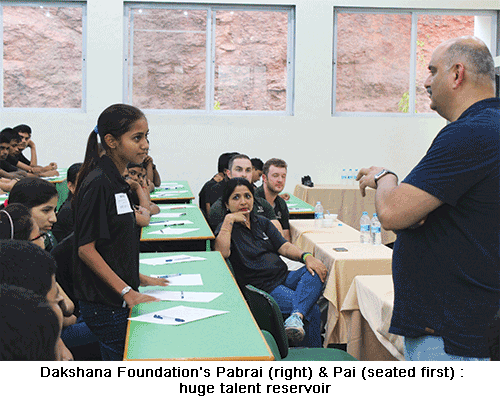 “The success of the Dakshana scholarship programme is proof of the huge reservoir of untapped talent in rural India. Our scholars have not only excelled at the IITs but also landed jobs with blue-chip companies such as Tata Motors, Reliance Industries and Microsoft. We now have 16 DAAN — Dakshana Alumni Network — chapters inside IITs countrywide with senior students volunteering to mentor and groom new scholars,” says Sharmila Pai, chief operating officer of Dakshana Foundation, who adds that the trust has recently launched a one-year residential JEE/NEET programme for selected government school students who have completed class XII, at the foundation’s 106-acre campus in Pune.
“The success of the Dakshana scholarship programme is proof of the huge reservoir of untapped talent in rural India. Our scholars have not only excelled at the IITs but also landed jobs with blue-chip companies such as Tata Motors, Reliance Industries and Microsoft. We now have 16 DAAN — Dakshana Alumni Network — chapters inside IITs countrywide with senior students volunteering to mentor and groom new scholars,” says Sharmila Pai, chief operating officer of Dakshana Foundation, who adds that the trust has recently launched a one-year residential JEE/NEET programme for selected government school students who have completed class XII, at the foundation’s 106-acre campus in Pune.
Although most educationists tend to focus on the excellent learning outcomes of JNV students, they tend to overlook the reality that these residential schools are modelled on India’s highly-respected vintage boarding schools which accord as much importance to non-academic, co-curricular and sports education. “Our focus is on all-round growth and development of students, and all JNVs offer a long menu of cultural and sports activities. JNV students regularly participate in Spic Macay programmes, the Bal Rang festival and Kala Utsav among other national level events. Last year, under the Japan-East Asia Network of Exchange for Students and Youth programme, 40 of our students visited Japan. Such non-academic initiatives develop the confidence and life skills of our students and prepare them for further education and employment,” says Manikuntala Sarkar, former assistant commissioner (admin & publications) of the Navodaya Vidyalaya Samiti and currently an academic consultant of the NVS.
| “High-quality modern education”
What are the aims and objectives of India’s highly prized JNVs? The mandate of the JNVs is to provide free-of-charge, high-quality modern education which includes inculcation of values, awareness of the environment, adventure activities and physical education to meritorious children predominantly from rural areas without regard to their family’s socio-economic condition. Against its targets and objectives, how successful do you think the JNVs have been? The JNVs have been quite successful in providing quality education to talented children from India’s rural areas. They have enhanced educational standards in rural India by sharing of expertise, experience and facilities. The admission-to-seats ratio of 1:50 speaks volumes of the JNV system and its success as perceived by the public. Critics allege that the JNV system is elitist with a sizeable number of its students from the middle-income category. What’s your comment? JNVs are providing high quality class VI-XII education to economically and socially under-privileged girls and boys in rural areas. Our enrolment data indicates that 78.25 percent of children in JNVs are from rural India, 24 percent from scheduled castes and 18 percent from scheduled tribes. Altogether, 40 percent of children are from very underprivileged backgrounds. The sample survey of NITI Aayog has observed that 15 percent of our children are from below poverty line families. The Union Budget 2017-18 has allocated Rs.2, 700 crore to JNVs. Is this sufficient? JNVs are functioning well within the limited budgetary allocation. Our effort is to provide the best possible education within the budget. What is the cost of building a new JNV? The cost of constructing a full-fledged JNV is Rs.28 crore. What are the distinguishing features of JNVs? The distinguishing features of JNVs are: high quality education to rural children; exceptionally dedicated teachers, and countrywide presence except in Tamil Nadu. JNVs are residential schools with 100 percent scholarships for all children. We promote national integration through cultural exchanges and provide reserved quotas for girl children, and scheduled castes and tribes. The objective of the JNV scheme was to build a JNV in every administrative district of India. Currently, there are only 594. Is there a plan for expansion? So far, 598 JNVs have been sanctioned in 35 states and Union Territories across the country with the exception of Tamil Nadu. Currently, we are in the process of establishing 62 new JNVs sanctioned in November 2016. With this, all administrative districts will be covered except in Tamil Nadu and districts with only urban population. Districts carved out after March 31, 2014 will be considered in subsequent proposals from the states. What are the future plans of the NavodayaVidyalaya Samiti? Our vision is to educate a much larger number of talented children from rural India, develop collaborations with best schools worldwide and also share best practices and experiences with other schools in the country. |
The deep thinking and commitment invested by NVS into the JNVs is proof that the (Central) government educracy is capable of developing excellent curriculums — in sharp contrast to the dull syllabuses offered by state government schools which are experiencing a continuous flight of students to low-cost private budget schools.
For instance, to promote national awareness and integration, NVS has designed a migration programme under which 30 percent of class IX students of every JNV transfer to a JNV in another state (the exchange is mostly between Hindi and non-Hindi speaking states) for a whole year. The scheme began modestly in 1988 with an exchange of 31 students between two schools, and has since been adopted as official policy. In the academic year 2014-15, 8,642 class IX students attended classes in JNVs other than their own under the inter-state exchange programme. Comments Girish Chandra, deputy commissioner of the Navodaya Vidyalaya Samiti regional office in Lucknow: “Inculcation of a sense of nationhood and national integration through insights into different cultures, experiencing different cuisines and exchange of ideas is the prime objective of the JNV migration programme.”
Undoubtedly, a factor which has contributed hugely to the success of JNVs and their emergence as role model government schools, is their 12,000 teachers recruited through a transparent process based on merit and seniority, in sharp contrast to teacher selection processes of state government schools in which scams and scandals are normative. Therefore, unlike state and local government schools where teacher truancy is a major problem, the teachers’ community within the JNVs is deeply committed and invested in the holistic development of their students. But there’s trouble in the offing.
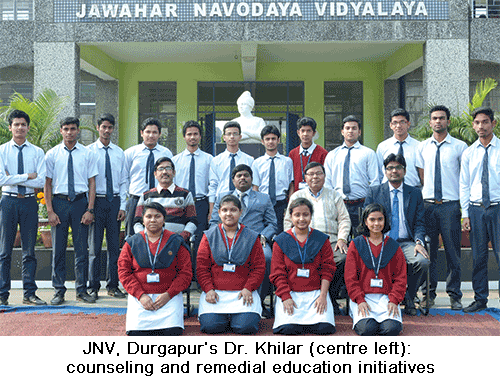 This is a 24-hour job. We look after 560 students round-the-clock as we also have to provide remedial tuition for laggard students. Therefore, most JNV teachers are stressed and overworked. The All India Navodaya Vidyalaya Staff Association has been demanding that the Samiti defines the working hours of teachers, improves working conditions and employs wardens and matrons to assist teachers in hostel duties. But thus far, our demands haven’t been met,” says a JNV teacher who preferred to remain anonymous.
This is a 24-hour job. We look after 560 students round-the-clock as we also have to provide remedial tuition for laggard students. Therefore, most JNV teachers are stressed and overworked. The All India Navodaya Vidyalaya Staff Association has been demanding that the Samiti defines the working hours of teachers, improves working conditions and employs wardens and matrons to assist teachers in hostel duties. But thus far, our demands haven’t been met,” says a JNV teacher who preferred to remain anonymous.
But despite offering the best primary-secondary education to rural students, the JNVs are also afflicted by the problem of drop-outs which is a defining characteristic of Indian public education. A review committee of the Union HRD ministry (2001) admitted that a substantial number of JNV students are dropping out, particularly in class XI. In class VIII, the dropout rate is 8 percent escalating to 12 percent in class X, and 22 percent in class XI.
“Performance anxiety and homesickness prompt some children to drop out of school. We are strongly addressing this problem by counseling parents and students on a regular basis, organising medical camps and conducting awareness programmes for adolescents on emotional and other issues. Career counseling and guidance is also offered for students from class VI onwards and remedial classes are held on weekdays for slow learners,” says Dr. Biswanath Khilar, principal of JNV, Durgapur (West Bengal) which has an enrolment of 331 students including 96 girls. Established in 2003, JNV, Durgapur is one of 12 JNVs in West Bengal, which until 1992 refused to join the JNV system.
Currently, all states except Tamil Nadu, boast at least one JNV. The NVS’ language policy which makes it mandatory for all students to learn English (the medium of instruction) and Hindi has cheesed off the state government in Tamil Nadu which has been protesting “Hindi imperialism” ever since anti-Hindi riots broke out in the state following the declaration of Hindi as the sole national language of India in 1965 — a decision which was soon reversed with English accorded par status as the associate national language. Since then, all state government schools in Tamil Nadu follow a two-language (English and Tamil) policy.
“With enactment of the Tamil Nadu Tamil Learning Act, 2006, which makes Tamil a compulsory language in all state, CBSE and CISCE-affiliated schools, Hindi can be studied as a third language if JNVs are set up in the state. The state government should change its stance and welcome the establishment of JNVs for the benefit of poor rural children deprived of excellent free-of-charge education provided by these schools,” says Dr. C. Satish, director of the Paavai Group of Schools, Namakkal, Tamil Nadu.
Indeed by any yardstick, there’s no denying that JNVs have emerged as islands of excellence in the bleak rural education landscape, and offer the best and talented among the educationally neglected children of rural India a unique opportunity to break out of poverty. The only complaint against JNVs is that there are too few of them — 594 for the 180 million children in rural India with NVS’ expansion plans moving at glacial pace.
During the period 2004-14 when the Congress-led UPA government was in power, only 85 JNVs were added. Though last November, the BJP-NDA government announced the establishment of 62 new JNVs, a mere Rs.109.53 crore was allocated for this purpose in the 12th Plan with a spill over amount of Rs.2,761.56 crore approved for the period 2017-18 to 2024-25. Therefore the NITI Aayog’s recommendation is that the Central government urgently establishes JNVs in 56 uncovered districts, allocates adequate funds for maintenance and repairs of existing JNVs, reevaluates admission procedures and expedites teaching and non-teaching staff appointments.
| JNV alumni narratives
The great contribution of the country’s much-too-few (594) Jawahar Navodaya Vidyalayas (JNVs), the first of which started in 1985, is that they have enabled over 100,000 utterly neglected and educationally deprived children to escape the grinding poverty and despair of rural India. Some narratives:
|
In the Union Budget 2017-18 presented to Parliament on February 1, the BJP/NDA government allocated Rs.2,700 crore to the NVS — Rs.4.54 crore per JNV. Quite obviously, this sum is barely sufficient to cover student expenses and teachers’ salaries, leaving no surplus for upgradation of facilities and new initiatives. Clearly, unless the BJP-led NDA government at the Centre fulfills its pre General Election 2014 promise of doubling national (Centre plus states) expenditure on education to 6 percent of GDP, even the existing 594 JNVs are likely to be engulfed by a sea of troubles with duplication of these excellent schools likely to remain a pipedream.
Given that the cost of building a mint new JNV is Rs.28 crore, attaining the target of doubling the number of JNVs (1,188) requires an expenditure of Rs.16,632 crore. EducationWorld (see ‘Squeezing the budget for human capital development’, Special Report, EW March) has presented a detailed schema for raising Rs.4.98 lakh crore for revamping public education. But the country’s top economists including Dr. Arvind Panagariya, vice chairman of NITI Aayog, who have been invited to critique the schema, have chosen to remain silent.
Comments Dr. Niranjanaradhya V.P, fellow and programme head of the Universalisation of Equitable Quality Education Programme of the Centre for Child and the Law of the National Law School of India University, Bangalore: “The country’s JNVs are excellent institutions which are proof that government can run good schools. The demand of the national RTE Forum is that all state government schools should be raised to the level of JNVs and that there should be a JNV-modeled day school in every gram panchayat. Public education has been so severely neglected by successive governments that the Central and state governments need to increase annual spending on education to not 6 but 10 percent of GDP immediately.”
Indeed, the case for doubling the number of the country’s 594 JNVs — crown jewels of the public education system — is not only compelling, it’s overwhelming.
With Amisha Shah (Bangalore), Swati Roy (Noida), Baishali Mukherjee (Kolkata), Puja Awasthi (Lucknow) & Hemalatha Raghupathi (Chennai)














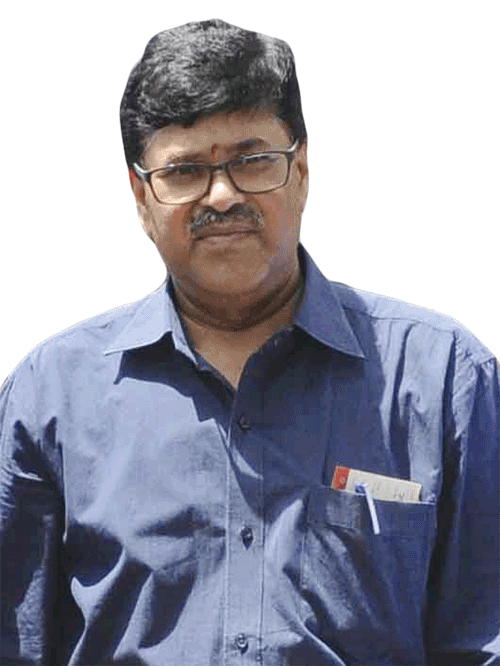 Biswajit Kumar Singh is commissioner of the Noida-based Navodaya Vidyalaya Samiti (estb.1985), an autonomous organisation of the Union HRD ministry, which administers the country’s 594 Jawahar Navodaya Vidyalayas (JNVs). Excerpts from an e-mail interview:
Biswajit Kumar Singh is commissioner of the Noida-based Navodaya Vidyalaya Samiti (estb.1985), an autonomous organisation of the Union HRD ministry, which administers the country’s 594 Jawahar Navodaya Vidyalayas (JNVs). Excerpts from an e-mail interview: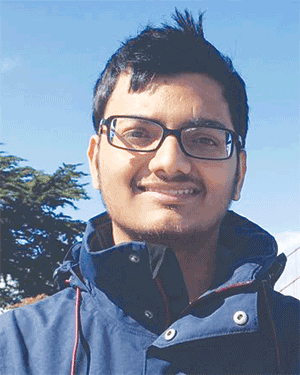 “My father owns a garment shop in Jafarganj, a small town in Uttar Pradesh. I attended JNV, Fatehpur until class X and was fortunate to win a Dakshana scholarship for IIT-JEE coaching. I secured a rank of 87 in IIT-JEE and went on to study computer science at IIT-Kanpur. I now work on machine learning and artificial intelligence at Google.” — Rajeev Krishna Omar, software engineer, Google, Bangalore (2010 batch of JNV, Lucknow)
“My father owns a garment shop in Jafarganj, a small town in Uttar Pradesh. I attended JNV, Fatehpur until class X and was fortunate to win a Dakshana scholarship for IIT-JEE coaching. I secured a rank of 87 in IIT-JEE and went on to study computer science at IIT-Kanpur. I now work on machine learning and artificial intelligence at Google.” — Rajeev Krishna Omar, software engineer, Google, Bangalore (2010 batch of JNV, Lucknow)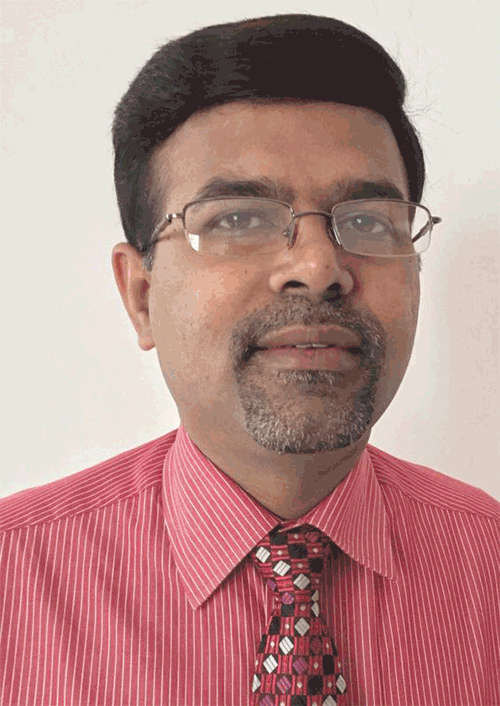 “I was one of six children of a government servant who was also supporting an extended family. Everything I am is because of JNV, Narayanpur in the Bidar district of Karnataka. When I completed my class IX exams, my eldest sister died in a stove blast. The hospital wasn’t able to treat her burns. This incident inspired me and I was determined to study medicine. I graduated from MR Medical College, Gulbarga and pressed on to qualify as a surgeon with postgrad qualifications from Sri Devaraj Urs Medical College, Kolar. Recently, we inaugurated a JNV alumni chapter in Bangalore which has 2,000 members. We have been fortunate to attend a JNV, and to be able to give back to society.” — Dr. Rajashekhar Jaka, Bangalore-based oncosurgeon and robotic surgeon (1998 batch of JNV, Narayanpur, Bidar)
“I was one of six children of a government servant who was also supporting an extended family. Everything I am is because of JNV, Narayanpur in the Bidar district of Karnataka. When I completed my class IX exams, my eldest sister died in a stove blast. The hospital wasn’t able to treat her burns. This incident inspired me and I was determined to study medicine. I graduated from MR Medical College, Gulbarga and pressed on to qualify as a surgeon with postgrad qualifications from Sri Devaraj Urs Medical College, Kolar. Recently, we inaugurated a JNV alumni chapter in Bangalore which has 2,000 members. We have been fortunate to attend a JNV, and to be able to give back to society.” — Dr. Rajashekhar Jaka, Bangalore-based oncosurgeon and robotic surgeon (1998 batch of JNV, Narayanpur, Bidar)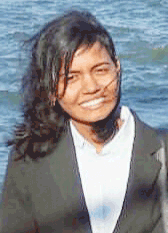 “My mother works in the road transport department of the state government. Her colleague’s husband worked in a JNV. She encouraged me to write the entrance test and I got through. On the principal’s suggestion, I wrote the Dakshana test, and was selected for the JEE scholarship. Only 10 percent of my fellow students in IIT-Guwahati were women. I am lucky to have had a JNV education which has completely transformed my life.” — Greeshma Balabhadra, analyst, Goldman Sachs, Bangalore (2012 batch of JNV, Hyderabad)
“My mother works in the road transport department of the state government. Her colleague’s husband worked in a JNV. She encouraged me to write the entrance test and I got through. On the principal’s suggestion, I wrote the Dakshana test, and was selected for the JEE scholarship. Only 10 percent of my fellow students in IIT-Guwahati were women. I am lucky to have had a JNV education which has completely transformed my life.” — Greeshma Balabhadra, analyst, Goldman Sachs, Bangalore (2012 batch of JNV, Hyderabad)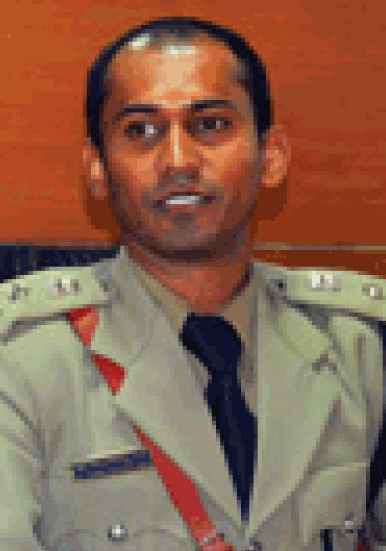 “My father is a farmer and mother a homemaker in the Mandya district of Karnataka. Admission into JNV, Tumkur was a major turning point in my life. It enabled me to fulfill my childhood dream of becoming a medical practitioner and later joining the Indian Police Service. When I visit my old school, I advise students that there are many other careers besides engineering and medicine.” — Dr. Boralingaiah M.B, DCP (South East), Bangalore (1994 batch of JNV, Tumkur)
“My father is a farmer and mother a homemaker in the Mandya district of Karnataka. Admission into JNV, Tumkur was a major turning point in my life. It enabled me to fulfill my childhood dream of becoming a medical practitioner and later joining the Indian Police Service. When I visit my old school, I advise students that there are many other careers besides engineering and medicine.” — Dr. Boralingaiah M.B, DCP (South East), Bangalore (1994 batch of JNV, Tumkur)








